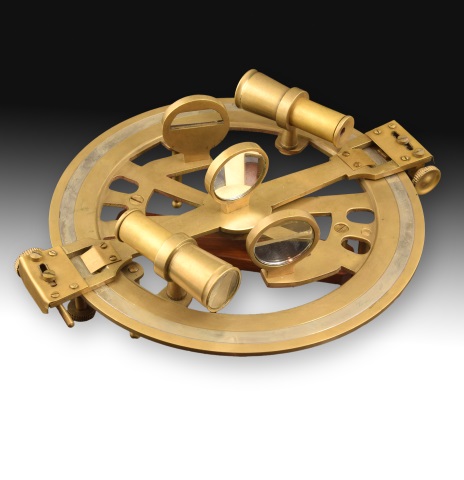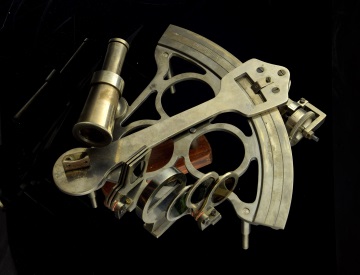
-
“Veilleuse” snail lamp. Snail, bronze, plastic, etc. 20th century. Lamp adapted for electric light with a bronze base (decorated with winged human forms and hoofed legs) and a shell body (the light source is inside the shell). This type of lamp was highly appreciated both for the exotic nature of the shell material and for the decoration that usually finished them off. Damage.
· Size: 21x11x11 cms.
DECORATIVE ANTIQUES
MISCELLANEUS
Ref.: Z0570
-
Birds. Framed watercolor. 20th century. Watercolor showing two birds, perhaps thrushes, perched on the branch of a flowering tree, with no background in the composition, reminiscent of old biology books. The work is unsigned.
· Size: 21,5x0,1x31 cms
DECORATIVE ANTIQUES
PAINTINGS
Ref.: Z0790
-
Three tricoloured lorises. Framed watercolour. 20th century. Framed watercolor showing three birds perched on branches. The tricolored lory (Lorius lory), or black-naped lory, is a bird that lives in New Guinea and has several subspecies.
· Size: 24,5x2x29,5 cms. INT 18,5x23,5 cms.
DECORATION
DECORATION COMPLEMENTS
Ref.: Z1963
-
"
· Size: 14x16,5 cms.
DECORATIVE ANTIQUES
PAINTINGS
Ref.: Z4427
-
Lot of eight handles. Wrought iron. 20th century, following old models. Wrought iron door handles that present, both in their shape and in their decoration based on cut-out plates, lines, balustrade shapes, etc., a clear influence from older models common in the Spanish school during the Baroque.
· Size: Mayor 1x1x9 cms
DECORATIVE ANTIQUES
WROUGHT IRON;MISCELLANEUS
Ref.: Z0206K
-
Pair of handles. Wrought iron. 20th century, following previous models. Pair of wrought iron handles with the plate that would be fixed to the door, furniture, etc. with the profiles cut following architectural shapes and the handle with moldings on the front.
· Size: 12,5x2,5x7 cms.
DECORATIVE ANTIQUES
WROUGHT IRON;MISCELLANEUS
Ref.: Z0210H
-
Chocolate cutter. Wood, metal. 19th century. A circular tray with an extension on one side for a metal piece that can be raised and lowered, attached to the other end of the tray. Chocolate bars or tablets would be cut with this movable piece. This type of kitchen utensil clearly lacks decorative elements, being purely utilitarian.
· Size: 30,5x17,5x8 cms.
DECORATIVE ANTIQUES
MISCELLANEUS
Ref.: ZF0404
-
Pair of candlesticks. Bronze. 19th century. Pair of bronze candlesticks with a hexagonal base followed by a circular shape that gently rises to the axis; the latter has a vase-like shape in its centre, enhanced by various mouldings; the pieces are finished off, as usual, by the lighters, tubular but with the upper edge flared outwards. Although this type of piece was basic in many European houses as early as the 17th century, it should be noted that this pair has a series of details that do not follow the most common models.
· Size: 8,5x8,5x14,5 cms.
DECORATIVE ANTIQUES
MISCELLANEUS
Ref.: ZF1088
-
Manolete. Framed print. 1945. Signed and dated on the image. Signed lower right. Titled lower right. Andrés Martínez de León (Coria del Río, April 5, 1895 - Madrid, May 25, 1978) was a Spanish painter and illustrator who trained at the School of Arts and Crafts in Seville, working as a ceramic illustrator in Triana and creating illustrations for the press since 1915. A great bullfighting fan, this work is a sample of his work.
· Size: 63,5x0.1x48,5 cms.
ANTIQUES
MISCELLANEUS;GRAPHIC WORK
Ref.: ZF1427
-
Pair of andirons. Iron, etc. 19th century.
Pair of fireplace andirons made up of a long, flat piece on which the logs would be placed, two legs in front placed in a semicircle and a vertical axis topped by a sphere in gilded metal, following neoclassical models. Weight: 4 kg."
· Size: 21x48x48 cms.
DECORATIVE ANTIQUES
MISCELLANEUS
Ref.: ZT0015
-
Two carriage scenes; “Christmas Eve. The top of the Hill” and “News of Waterloo! On the Great North Road: June 1815”. Framed lithographs. After WRIGHT, George (England, 1860-1944). George Wright was one of the leading equestrian artists of his time, specialising in hunting, carts and carriages, horses, races, etc. A self-taught artist like the rest of his family, little is known about his life. In 1925 he was in the pay of Ackermanns (England) and Grand Central Galleries (New York, United States of America), two very important lithograph publishing companies. His work is preserved in important private collections and institutions such as the Walker Art Gallery (UK), etc.
· Size: 51x4,5x41 cms. INT 15x23 cms.
DECORATIVE ANTIQUES
PAINTINGS
Ref.: ZT0047
-
Blue-and-yellow macaw or Ara ararauna. Framed watercolour. 20th century. Framed watercolor showing a blue and yellow macaw perched on a branch leaning towards some fruit. Aesthetically, it is reminiscent of natural-themed prints from the first half of the 19th century.
· Size: 24x2,5x29 cms. INT 21x16 cms.
DECORATIVE ANTIQUES
PAINTINGS
Ref.: ZT0050
-
Advertising poster. Cardboard. Possibly Spain, circa the first half of the 20th century. Advertising poster of the type used inside a business due to its size and the material it is made of, depicting a young woman mowing in a field, with striking colors.
· Size: 24,5x0,1x35 cms
ANTIQUES
MISCELLANEUS;GRAPHIC WORK
Ref.: ZF135432
-
Advertising poster. Die-cut cardboard. Spain, possibly early 20th century. Advertising poster made of die-cut cardboard and decorated with a landscape with windmills in an elaborate frame, leaving the lower area blank. This type of element was often used in stores to draw attention to a product.
· Size: 32x0,1x46 cms
ANTIQUES
MISCELLANEUS;GRAPHIC WORK
Ref.: ZF135435
-
Arab man. Framed drawing. Possibly Spanish school, 1963. Signed and dated (lower right). Marks present. Framed drawing showing an elderly man wearing a turban covering his hair. It is signed and dated (63) in the lower right corner. Both its style and subject matter clearly show the influence of the Orientalist movement that prevailed in various European schools of painting during the 19th century.
· Size: 25x2x34 cms
ANTIQUES
MISCELLANEUS;GRAPHIC WORK
Ref.: ZF136825
-
Bronze globe lamp. The globe that acts as a lamp stands on a bronze tripod decorated with a stem with leaves and flowers and secured at the top by a circle with the same decorative elements. It stands out for its blue and reddish-pink colours. The simplicity of the metal part means that the focus is on the tones of the upper part.
· Size: 17x17x38 cms.
N/D
Ref.: L3
-
Fireplace set. Metal A set of fireplace utensils made of gilded metal and decorated with vase-shaped finials. The supporting piece features an openwork "rail" at the bottom. All these details appear to be inspired by antique pieces.
· Size: Alt. 75 cms.
DECORATION
DECORATION COMPLEMENTS
Ref.: AG003
-
Binoculars with an antique finish. Gold-plated metal, other. These metal binoculars, crafted with an antique gold finish, feature a hanging loop and a vintage look reminiscent of classic binoculars. A versatile decorative piece, they suit a variety of styles and tastes.
· Size: 11,5x5,5x14 cms.
DECORATION
DECORATION COMPLEMENTS
Ref.: AR021
-
Binoculars with case. Silver-plated metal binoculars with adjustable lenses and clean, elegant lines. Inspired by classic models. Weight: 945 gr.
· Size: 9x15x17 cms.
DECORATION
DECORATION COMPLEMENTS
Ref.: AR022
-
Openwork bonbonniere with enameled porcelain flowers. Inspired by models from the Manufacture Nationale de Sèvres (France).
The lidded bonbonniere is openworked almost entirely and decorated with roses, stems, and small flowers of various colors. This type of porcelain was highly prized in Europe from the 18th century onward, and several factories produced similar models to the present one. Specifically, this piece was inspired by small boxes from the Manufacture Nationale de Sèvres.
Weight: 1.6 kg"
· Size: 22x22x18 cms.
N/D
Ref.: S4403
-
Table lamp with shade and lady sculpture. The polygonal pedestal highlights the sculpture adorning the lamp's base. It depicts a lady seated on a chair, dressed in a tunic reminiscent of classical art, engrossed in reading the book on her lap. The young woman's pose, with her hand to her mouth, evokes the naturalism of 19th-century works.
· Size: 14x14x40 cms.
N/D
Ref.: L4
-
Decorative horn. Gold-plated metal. Decorative bugle made of gilded metal.
· Size: 25x8x14 cms.
DECORATION
DECORATION COMPLEMENTS
Ref.: AP007
-
Special Offer! - Off

The sextant is an instrument used to measure angles between two objects, such as two points on a coastline or a celestial body, traditionally the Earth's sun and the horizon. By knowing the elevation of the sun and the time of day, the observer's latitude can be determined. This determination is made with considerable precision using simple mathematical calculations. This instrument, which replaced the astrolabe due to its greater precision, was of great importance in maritime navigation for several centuries, including air navigation, until more modern systems, particularly satellite positioning, became established in the final decades of the 20th century. The name sextant comes from the instrument's scale, which covers an angle of 60 degrees, or one-sixth of a full circle. Decorative article.
· Size: 20x20x11 cms.
DECORATION
DECORATION COMPLEMENTS
Ref.: AP020
-
Special Offer! - Off

"
· Size: 24x23,5x11 cms.
DECORATION
DECORATION COMPLEMENTS
Ref.: AR010